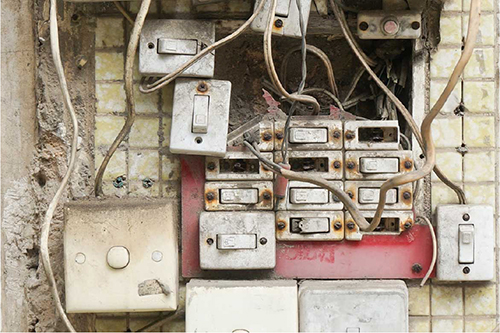Do I need a Fire Certificate for my business?
I recently was contacted asking if I would give a small retail business a ‘Fire Certificate’ to satisfy their insurers. Their perception was that it would be a short visit at the end of which I would leave them with a certificate, for under £50.
I’m afraid the short answer to this question is no. Mainly because Fire Certificates are no longer issued for most businesses as this would fall under old legislation.
The principles behind the certificate, however, are still very much in force and if you don’t comply, you could find yourself on the receiving end of a hefty fine, closure, or at risk of fire that could leave your business uninsured and risk lives.
The Regulatory Reform (Fire Safety) Order 2005 is very clear about what you must do as a business owner and employer and which laws and guidance you must adhere to.
So, what do I need?
1 Appoint a Responsible Person:
First, you must appoint a Responsible Person for fire safety within your business. They must have the competence, authority, and resource to carry out their duties – some companies get an outside consultant to assist with these responsibilities.
2 Carry out a Fire Risk Assessment:
You must carry out a Fire Risk Assessment on your premises to identify who could be harmed and how, then identifying the necessary controls that comply and protect people you are responsible for, from the risks of fire. A fire risk assessment should be carried out by a ‘competent person’ – A person with enough training and experience or knowledge and other qualities to enable them properly to assist in undertaking the preventive and protective measures. Some Premises – particularly in small or low-risk premises – may be able to carry out their own fire risk assessment. Whilst there are advantages of doing a fire risk assessment in house. You need to know your limits.
3 Fire Safety Equipment:
You must ensure you have the correct Fire Safety Equipment in place, by this I mean Fire Extinguishers, Detection/Alarm Systems and Emergency Lighting etc. These systems must be maintained regularly by competent contractors and with in-house checks carried out in between.
4 Sharing responsibility:
You must ensure you have shared information, roles, and responsibilities to others in your business, so that you can all work together to keep safe. You must provide adequate training and information to your staff to ensure they know what to do in the event of a fire emergency – this could be fire drills, fire extinguisher training, Fire Warden training etc.
5 Writing it down:
You must ensure you have a Fire Safety Procedure or Policy that identifies who is responsible for what aspect of Fire Safety within your business, for example who carries out the Fire Risk Assessment and when, who carries out the weekly Fire Alarm testing, when you carry out evacuation practices (Did you know these must be a minimum of once per year, but best practice is a minimum of 2!).
A bit about managing fire risks:
When I carry out a Fire Risk Assessment there are two simple principles that, if followed will help with a basic approach to fire safety when managing your business.
1 The Fire Triangle:
Have you heard of it before? The idea is that if you have a triangle and you take one of the sides away, you no longer have a triangle. Similarly, with a fire you need 3 key elements to start/sustain a fire, if you take one away, you no longer have a fire!
The 3 key elements….
- Heat or ignition (something to start the fire)
- Fuel (something to burn).
- Oxygen

If you don’t ignite a fire, there isn’t one…
If you don’t have anything to burn, there isn’t one.
If you don’t have oxygen, there isn’t one… (think back to chemistry where you have a lit candle and put a jam jar over the top… once the oxygen is used up the candle goes out!).
2 The 5 ways a fire can spread:
It is important to understand how a fire can spread in order to prevent it. In training I always use a wastepaper basket example:

Identify your sources of fuel:
- Paperwork
- Packaging / card
- Textiles / furniture / decorations
- Waste
- Flammable substances – fuels or paints?
- Sources of higher oxygen – gas cylinders?

Identify your sources of heat or ignition:
- Electrical equipment
- Charging equipment
- Hot work carried out – grinding, welding, or soldering?
- Cooking
- Heaters – portable heaters
- Fireworks

How might you control the risks of a fire starting?
- Do you have decorations directly above a portable heater?
- Do you have card stored next to your electrical consumer unit?
- Do you overload plug sockets or extension leads with high draining equipment (e.g. fan heaters, hairdryers)?
- Do you store flammable substances away from everything else?
- Do you get your gas and electrical systems maintained by a competent contractor?
All these must factor into your Fire Risk Assessment along with knowing and understanding what the legal guidance states about what Fire Safety Equipment you should have in place and where it should be placed.
Guidance for managing fire risk is very complex and it is important that to carry out a fully comprehensive Fire Risk Assessment for your business requires extensive knowledge of guidance that applies to you.
Remember to get in touch if you need support and guidance – we are here to help!